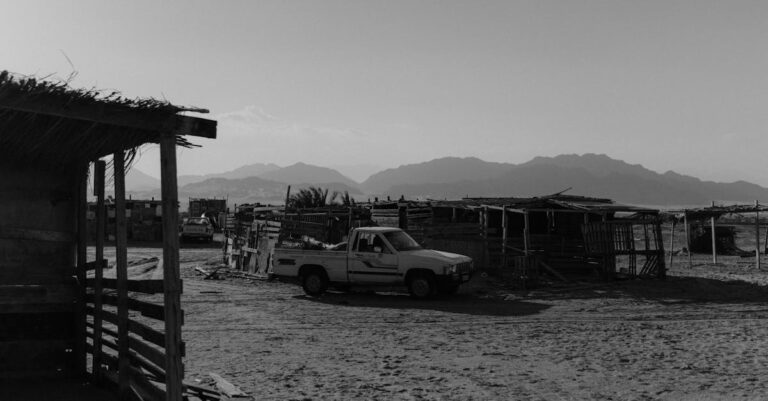Table of Contents
- Rental Car Insurance Explained Easy: Your Stress Free Guide
- So, You’re Renting a Car… Now What About Insurance?
- What Exactly IS Rental Car Insurance, Anyway?
- Do I *Really* Need It? The Million Dollar Question
- Types of Rental Car Insurance (The Nitty Gritty)
- Alternatives: Can I Skip the Counter Offer?
- What About International Rentals? A Whole New Ballgame?
- Making the Right Choice for YOU
- Conclusion: Driving Away Confidently
- Frequently Asked Questions (FAQs)
Rental Car Insurance Explained Easy: Your Stress Free Guide
So, You’re Renting a Car… Now What About Insurance?
Okay, picture this: you’ve just landed after a long flight, maybe a bit groggy, you navigate the airport maze, and finally reach the rental car counter. You’re so close to freedom, hitting the open road! But then comes the dreaded question, delivered with a practiced smile: “Would you like to purchase our insurance coverage?” Suddenly, your brain feels like scrambled eggs. Collision Damage Waiver? Liability? Personal Effects? What does it all mean? Do you need it? Is it a rip off? Relax! You’re not alone. This whole rental car insurance thing can feel like navigating a minefield blindfolded. But honestly? It doesn’t have to be that complicated. Let’s break it down together, step by step, in plain English, so you can confidently decide what’s right for you without breaking a sweat (or the bank).
What Exactly IS Rental Car Insurance, Anyway?
Think of rental car insurance like a temporary safety net specifically designed for the car you’re borrowing. It’s not quite the same as your everyday car insurance. Instead of one big policy, rental companies usually offer a menu of different coverages, each protecting against a specific type of risk while you’re driving their vehicle. It’s designed to cover potential costs if something unfortunate happens – like an accident, theft, or damage – while the car is in your possession.
It’s Not Just One Thing!
This is where most of the confusion comes in. Unlike your personal auto policy which might bundle things together, rental insurance is often offered à la carte. They’ll present you with several options, each with its own acronym and price tag. Understanding what each piece does is key to not overpaying or, worse, finding yourself underinsured when you really need it. We’ll dive into the specifics of these options soon, but just know it’s rarely an all or nothing deal.
Do I *Really* Need It? The Million Dollar Question
Ah, the core question! And the honest answer? It depends. Frustrating, I know! But it truly hinges on a few factors:
- Your existing personal auto insurance: Does it extend coverage to rental cars? If so, how much and what types?
- Your credit card benefits: Many credit cards offer some form of rental car insurance as a perk, but the coverage varies wildly.
- Your tolerance for risk: How much financial exposure are you comfortable with if something goes wrong?
- Where you’re renting: Insurance rules and requirements can differ, especially if you’re renting internationally.
- The value of the rental car: Crashing a basic sedan is financially different from damaging a luxury SUV.
Before you even get to the rental counter, doing a little homework on your existing coverage can save you a lot of hassle and money. Don’t just assume you’re covered; verify it!
Types of Rental Car Insurance (The Nitty Gritty)
Alright, let’s demystify those acronyms the rental agent throws at you. Here are the main players you’ll likely encounter:
Collision Damage Waiver (CDW) / Loss Damage Waiver (LDW)
These two are often used interchangeably, though LDW typically includes theft, vandalism, and loss of use in addition to collision damage. Essentially, if you buy this, the rental company *waives* its right to come after you for repair costs if the rental car gets damaged or stolen while you have it. Think of it as “Oops, I scratched/dented/totaled their car” protection. However, this isn’t technically “insurance” in the traditional sense; it’s a waiver agreement between you and the rental company. It usually comes with a deductible (an amount you still have to pay out of pocket), though sometimes zero deductible options are available for a higher price. Be sure to read the fine print – certain actions (like driving under the influence or off roading) can void this waiver completely. This is often the most expensive option at the counter.
Liability Insurance (Protecting Others)
This is crucial. Liability insurance covers damages you might cause to other people’s property (like their car) or injuries you might cause to other people in an accident where you are at fault. While rental cars often come with the minimum state required liability coverage, these minimums can be shockingly low in some places. Imagine causing a serious accident – those minimums might not even begin to cover the medical bills or repair costs for the other party. Supplemental Liability Insurance (SLI) or Liability Insurance Supplement (LIS) boosts these coverage limits significantly, often up to $1 million or more. If your personal auto insurance doesn’t have robust liability limits that extend to rentals, or if you don’t own a car, seriously consider this.
Personal Accident Insurance (PAI)
This coverage is focused on you and your passengers. It provides medical and ambulance benefits in case of accidental injury while driving or riding in the rental car. It might also include an accidental death benefit. Before buying PAI, check your existing health insurance and any life insurance policies you hold. Often, your regular health insurance will cover medical expenses from a car accident, potentially making PAI redundant. If you have good health coverage, you might be able to skip this one.
Personal Effects Coverage (PEC)
Got valuable stuff you travel with? Laptops, cameras, luggage? PEC insures your personal belongings against theft or damage while they are inside the rental car. Again, check your homeowner’s or renter’s insurance policy first. Many policies provide “off premises” coverage for personal property, which might already protect your belongings even when they’re in a rental car. There’s often a limit per item and a total limit, so weigh the cost against the value of what you typically travel with and your existing coverage.
Alternatives: Can I Skip the Counter Offer?
Yes! You often have other options besides buying everything offered at the rental counter. Here’s where that homework comes in handy:
Using Your Personal Auto Policy
If you own a car and have comprehensive and collision coverage, it often extends to rental cars (at least for rentals within the US and Canada). Call your insurance agent or check your policy documents *before* your trip. Ask specifically:
- Does my collision/comprehensive coverage apply to rental cars?
- Do my liability limits apply? Are they high enough?
- Is there a limit on the type of vehicle covered (e.g., no coverage for large trucks or luxury vehicles)?
- Is coverage limited to a certain number of days?
- Does it cover “loss of use” fees (what the rental company charges for the time the car is being repaired and can’t be rented out)? This can be a sneaky extra cost.
- What is my deductible? (You’ll still have to pay this if you make a claim).
Knowing these answers empowers you to confidently decline the rental company’s CDW/LDW if your own policy provides adequate protection.
Credit Card Coverage: The Hidden Gem?
Many travel rewards credit cards, and even some standard ones, offer rental car insurance as a perk when you use that card to pay for the entire rental transaction. This is often *secondary* coverage, meaning it only kicks in *after* your personal auto insurance pays out (or if you don’t have personal auto insurance). Some premium cards offer *primary* coverage, which pays out first, before your personal insurance, meaning you wouldn’t have to file a claim with your insurer (potentially avoiding premium increases). This benefit usually covers theft and collision damage (similar to a CDW/LDW).
Understanding Credit Card Limitations
Before relying solely on your credit card, dig into the details. Call the benefits administrator (the number is usually on the back of your card) or check the card’s guide to benefits online. Key things to verify:
- Is the coverage primary or secondary?
- What types of vehicles are excluded? (Often includes trucks, large vans, exotic cars, antique cars, RVs).
- Is there a maximum rental period? (Often 15 or 30 consecutive days).
- Are certain countries excluded? (Coverage may not apply in places like Ireland, Israel, Italy, Australia, Jamaica, New Zealand).
- Does it cover loss of use, administrative fees, or towing charges?
- Do you need to decline the rental company’s CDW/LDW for the card’s coverage to apply? (Almost always, yes).
Don’t just assume your card has great coverage; confirm the specifics!
Non Owner Car Insurance: An Option?
What if you don’t own a car but rent frequently? A non owner car insurance policy might be a good fit. This type of policy primarily provides liability coverage when you’re driving a car you don’t own. It can be more cost effective than constantly buying the rental company’s supplemental liability insurance if you rent often. It typically doesn’t include collision or comprehensive coverage for the rented vehicle itself, so you might still need to rely on a credit card or purchase the CDW/LDW for that.
What About International Rentals? A Whole New Ballgame?
Renting a car outside your home country (especially outside North America) can add layers of complexity. Here’s what to keep in mind:
- Your personal auto insurance likely won’t cover you. Most US auto policies only work within the US and possibly Canada.
- Credit card coverage might be limited or non existent. As mentioned, some countries are frequently excluded from credit card rental insurance benefits. Always verify country specific coverage.
- Local laws might mandate certain insurance. In some countries, specific types of insurance (like liability) are included in the rental rate by law, while others might require you to purchase specific coverage locally.
- CDW/LDW might be mandatory or highly recommended. Because your personal insurance probably won’t apply, the CDW/LDW offered by the rental company becomes much more important. Check the deductible amounts carefully.
- Third party insurance options exist. Companies specialize in selling standalone rental car insurance policies, sometimes offering broader coverage or better rates than the rental counter, especially for international trips. Research these in advance.
When renting abroad, it’s often wise to be more conservative and potentially purchase more coverage from the rental company or a specialized third party insurer, unless you’ve meticulously confirmed coverage through a premium credit card.
Making the Right Choice for YOU
Okay, deep breath. We’ve covered a lot. How do you synthesize all this information at the rental counter (or preferably, *before* you get there)?
- Check Your Personal Auto Insurance FIRST: Understand exactly what it covers (collision, liability, loss of use, geographic limits, deductibles) for rental cars. Get it in writing or take notes during your call.
- Investigate Your Credit Card Benefits: Confirm if you have rental car coverage, whether it’s primary or secondary, what it covers (damage/theft), vehicle exclusions, country exclusions, and rental duration limits. Remember to use THAT card for the entire rental payment and decline the rental company’s CDW/LDW.
- Assess Your Health and Homeowner’s/Renter’s Insurance: Do you need extra Personal Accident Insurance or Personal Effects Coverage, or are you already covered?
- Consider Your Destination: Are you renting domestically or internationally? International rentals often require a different approach.
- Evaluate Your Risk Tolerance vs. Cost: How much would paying your deductible or potential uncovered costs impact you? Sometimes, paying a bit extra for peace of mind (like buying SLI if your liability limits feel low, or the CDW if you have a high deductible or rely on secondary credit card coverage) is worth it.
- Don’t Be Pressured: Rental agents are often incentivized to sell insurance. Stick to your informed decision based on your research. Politely but firmly decline coverages you know you don’t need.
Think of it like packing for a trip. You check the weather (your existing coverage), decide what clothes you need (which insurance types are relevant), and pack accordingly (make your purchase decisions). You wouldn’t pack a parka for the Bahamas, right? Same idea – don’t buy insurance you don’t need!
Conclusion: Driving Away Confidently
Navigating rental car insurance doesn’t have to feel like deciphering an ancient language. By taking a little time *before* your trip to understand your existing coverage through your personal auto policy and credit cards, you can walk up to that rental counter armed with knowledge. You’ll know which parts of the rental company’s insurance spiel are genuinely necessary for your situation and which ones you can confidently decline. Remember the main types: CDW/LDW for damage to the rental car itself, Liability (SLI/LIS) for damage/injury you cause to others, PAI for your medical bills, and PEC for your belongings. Assess your needs, check your existing safety nets, and make an informed choice. Now you can grab those keys, buckle up, and focus on the adventure ahead, knowing you’re properly protected without paying for unnecessary extras. Happy driving!
Frequently Asked Questions (FAQs)
1. If I use my credit card’s insurance, do I still need to buy anything at the counter?
Often, yes. Most credit cards primarily offer coverage similar to a CDW/LDW (damage/theft of the rental car). They usually do not provide Liability Insurance (covering damage you cause to others). So, even if your card covers the car itself, you might still need to assess if you need Supplemental Liability Insurance (SLI/LIS), either through your personal auto policy or by purchasing it from the rental company, especially if the state minimum liability included with the rental is low.
2. What happens if I decline the CDW/LDW and then damage the car?
If you declined the CDW/LDW relying on your personal auto insurance or credit card coverage, you’ll need to file a claim with that provider. The rental company will likely charge your credit card for the estimated damage amount or your deductible upfront. You’ll then work with your insurance company or credit card benefits administrator to get reimbursed. Be prepared for paperwork and potentially paying out of pocket initially. The rental company may also charge you for “loss of use” and administrative fees, which may or may not be covered by your alternative insurance.
3. Does rental car insurance cover things like flat tires or running out of gas?
Generally, no. Standard rental insurance options like CDW/LDW, Liability, PAI, and PEC typically don’t cover roadside assistance issues like flat tires, lockouts, or needing fuel delivery. Rental companies often sell a separate Roadside Assistance package for these types of incidents. Some premium credit cards might include roadside assistance benefits, so check your card perks as well.
4. Is rental insurance different if I rent through a car sharing service like Turo or Getaround versus a traditional company like Hertz or Avis?
Yes, it can be very different. Peer to peer car sharing platforms like Turo usually have their own insurance structures. The car owner provides insurance, and the renter typically chooses from several protection plans offered by Turo, which include varying levels of liability and physical damage coverage with different deductibles. Your personal auto insurance or credit card benefits might not apply in the same way (or at all) to these rentals as they do to traditional rentals. Always read the specific insurance terms of the car sharing platform very carefully.
5. Can I buy rental car insurance from a third party company instead of the rental desk?
Absolutely. Several independent insurance companies offer standalone collision damage insurance for rental cars, sometimes at lower prices than the rental counter. You typically purchase this online before your trip. These policies can be a good option, especially for international rentals where your personal or credit card insurance might not apply. Just make sure you understand what the third party policy covers (and excludes) and be aware that if you have a claim, you’ll likely have to pay the rental company first and then seek reimbursement from the third party insurer.









